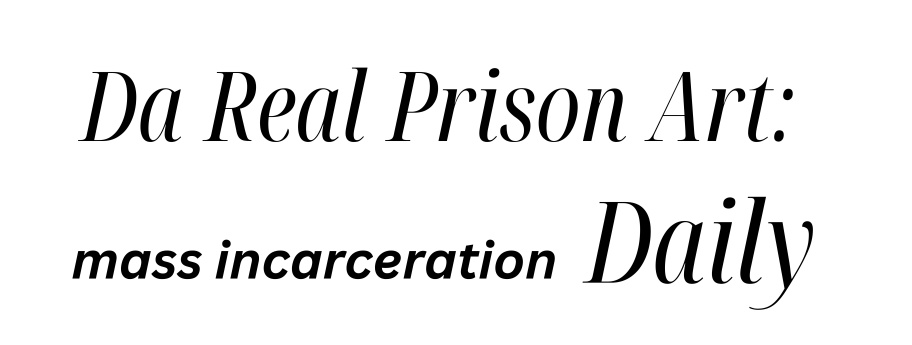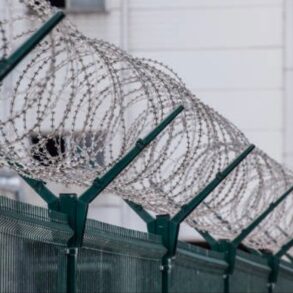By Amanda Hernández
Stateline.org
As governors and state legislatures shape their corrections budgets for the current and upcoming fiscal years, many are struggling to balance major investments in public safety with rising costs and slowing revenues.
These budget discussions are unfolding against a national backdrop in which the Trump administration is prioritizing law and order. Many states, particularly Republican-led ones, are feeling pressure to align their legislative priorities, with some proposing increased public safety funding to target illegal immigration and drug trafficking.
Still, states face new financial constraints after years of revenue growth, and lawmakers are looking for ways to cut back. So even though states might have increased spending on public safety in recent years, experts expect the corrections budgets for jails and prisons to level off, according to Brian Sigritz, the director of state fiscal studies for the National Association of State Budget Officers.
“The public safety requests will have to be weighed against the other funding priorities,” Sigritz told Stateline.
Balancing budgets
In Florida, Republican Gov. Ron DeSantis has proposed spending nearly $510 million and adding 36 new positions in various agencies to support federal immigration enforcement.
He also has proposed $8 million for infrastructure improvements and more than $2 million for radio tower replacements and satellite phones for probation officers in rural counties.
His budget would allocate roughly $3 million for corrections-related communications and security, which includes drone detection technology, thermal fence cameras and license plate readers.
But while governors propose budgets that highlight their priorities, legislatures decide where the money actually goes.
Lawmakers and corrections advocates have raised concerns about the Florida prison system’s aging facilities. Many built before 1980 lack central heat or air conditioning. Despite years of budget surpluses, efforts to improve conditions for inmates and staff have been limited, with DeSantis vetoing funding for new facilities in recent years.
Other states’ executive branches also want more money to upgrade facilities and hire more staff.
Georgia officials have proposed a $600 million investment in the state’s prison system after a U.S. Department of Justice report found widespread violence and inadequate staffing violated inmates’ constitutional rights. The state aims to hire 330 correctional and security officers over the next year on the way to more than 880 new staff in the coming years. The proposed budget also includes salary increases to help curb high turnover rates.
Early this month, the Georgia House approved a revised spending plan that would include $333 million to make the state’s prisons safer. In addition to building two correctional housing facilities, some of the funding would pay for body cameras and Tasers for correctional officers, as well as a new surveillance unit to improve real-time monitoring of facilities.
Oklahoma’s Department of Corrections in January requested $550 million from the legislature, including funding for body-worn cameras, facial recognition technology and employee benefits. But Republican Gov. Kevin Stitt’s proposed budget for fiscal year 2026 would maintain a flat allocation, keeping the department’s funding at $544 million — the same as the current budget.
Some states are facing budget deficits and have proposed cutting corrections funding or closing facilities.
West Virginia, for example, is grappling with a $47 million shortfall in its corrections budget for the current fiscal year.
California Democratic Gov. Gavin Newsom proposed cutting corrections spending by $400 million even as the state’s incarcerated population is expected to increase because of tougher sentencing laws approved by voters in November.
Pennsylvania Democratic Gov. Josh Shapiro’s proposed budget calls for closing two of the state’s 24 correctional facilities and two community corrections centers, a move aimed at saving more than $110 million.
The Shapiro administration argued that correctional facilities have “consistently operated under capacity, with utilization rates ranging from 84 to 92 percent.” The Pennsylvania State Corrections Officers Association decried the proposed closures, arguing they would endanger both staff and inmates, and harm local economies.
The Pennsylvania Department of Corrections last week recommended the closures of a state prison, a boot camp and two community transitional corrections centers.
The state prison and boot camp together employ nearly 900 full-time staff and house more than 2,500 inmates, according to the latest population data. The department said affected employees would be offered comparable jobs nearby.
North Dakota’s approach
North Dakota Republican Gov. Kelly Armstrong unveiled his proposed budget to legislators in January, highlighting money aimed at reducing prison and jail overcrowding.
Armstrong’s proposal would increase the Department of Corrections and Rehabilitation’s budget by $2.12 million, bringing the total to $5.05 million for the 2025-2027 biennium.
In October, the department began using an admissions system similar to a “ waitlist” because the men’s prisons were over capacity, and overflow beds in county jails were also full.
“Our population is exploding,” Michele Zander, the department’s chief financial officer, told Stateline. “There’s no room, even in the county jails. It’s hard to find spots.”
The department is responsible for at least 1,963 people, including some held in county and regional jails, according to population statistics released in January. At least 15 more people remain in county jails awaiting admission.
The department’s total capacity across both men’s and women’s facilities is 1,636 people.
Beyond reducing overcrowding, the department’s waitlist system also helps curb violence and ensure better access to programs and services, according to Rachelle Juntunen, the deputy director of adult services.
“We still want to maintain and run safe prisons that have the needed services,” Juntunen told Stateline.
Armstrong’s proposal includes $36.5 million to complete the women’s Heart River Correctional Center, $23 million for planning and designing a new Missouri River Correctional Center and $16.1 million for other repairs.
The budget would allocate another $16.1 million to staff and to operate the newly expanded Grand Forks County Correctional Center, which would add 90 beds by July 1. The budget proposal also includes $9.3 million for a temporary housing facility at the Missouri River Correctional Center, adding 88 beds by July 1, 2026, for a total of 178 new beds between the two facilities.
Armstrong’s budget also would dedicate $19.2 million to behavioral health programs, including addiction treatment, crisis support and peer recovery initiatives. An additional $2 million would be set aside for crisis support in rural areas, where access to mental health and addiction treatment is limited.
Armstrong also announced the creation of a new Cabinet position — the commissioner of recovery and reentry — to coordinate initiatives among corrections, addiction counselors, tribal partners, law enforcement and the judiciary.
Stateline is part of States Newsroom, a national nonprofit news organization focused on state policy.
—
©2025 States Newsroom. Visit at stateline.org. Distributed by Tribune Content Agency, LLC.
This post was originally published on this site be sure to check out more of their content.








